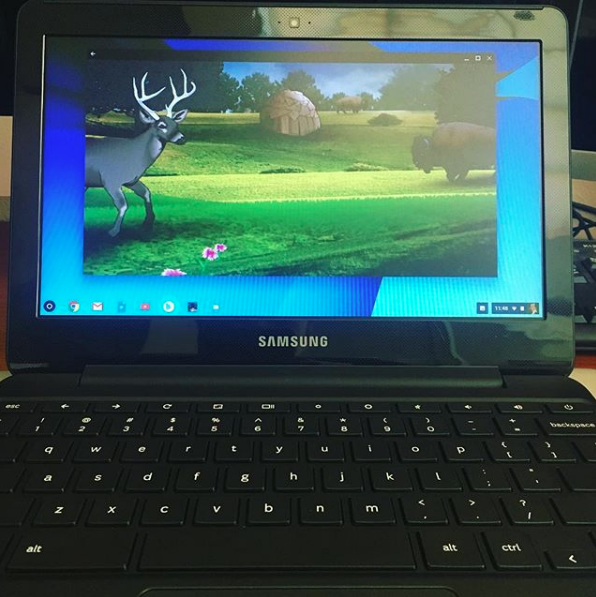You may have heard about all of the schools that have 1 to 1 devices , Chromebooks, iPads or Windows computers. It’s a lie.
I’m not saying that no schools have a device for every child. I’m sure some do. However, one thing the last four years has taught me is that surveys, or even interviews, are no substitute for going into a building to see for yourself.
We’ve been looking at the barriers to implementing educational software in schools. In the process, we’ve visited 42 schools, in the US and Chile, along with conducting many interviews. (Thank you immensely, by the way, if you’re were part of this sample.)
Here is the TL; DR version – Many schools that claim to have a device for each child have no computers at all, or very few
Of the 32 US schools, 100% of the administrators told us that their schools had computers. Of those 32 schools, 8 had no computers at all for at least start of the study period. Three schools had one or two computer labs shared by 15 classrooms or more, giving the students, at most three hours per week of access to computers.

Let’s break it down, shall we?
Elementary Schools A, B & C and Middle Schools D and E part of a 1 to 1 district. We were told devices were available for any teacher who wanted to use them. When the language arts teacher at School C requested computers so her students could play our bilingual games, she was told the computers would be delivered. A year later, she has yet to receive them.
Elementary Schools A and B simply don’t have computers or iPads. They just don’t and no one has said anything about getting any.
Middle School D teachers were told they would receive Chromebooks for all of their students this year. It is now December and the classroom still have no computers.
Middle School E had laptops but these were stolen over the summer and not replaced for a year. In the intervening year , over 500 students shared about 60 working computers. In theory, this would allow classes three hours a week of computer time but in practice the computer lab was often used for state or district mandated tests, so students had no computer access for weeks on end unless their class was testing.
Elementary School F is in another district . They also have been told they are going to have 1 to 1 Chromebooks this year. Four months into the school year , the teachers are still waiting for the Chromebooks to be delivered.
Note that at all six of these schools, all administrators at the district and some at the school level proudly stated that they were a 1 to 1 school.
Elementary School G , in yet another district, did receive their computers four months after the beginning of the school year. It should be noted these were not replacements. On our initial visit, the school had no computers.
Elementary School H, like the middle school in the other district across the country, had laptops stolen over the summer last year. For the first five and a half months of the school year, over 500 students shared about 60 working computers. As with the other school that was robbed, the computer lab was often used for state or district mandated tests, so students had no computer access for weeks on end unless their class was testing.
This doesn’t even get into the schools that have broken computers, computers so old they can’t run most software, Internet so slow it can’t run most software and computers that haven’t had software updated in years because no one has the time or administrator password, but that’s the subject of another post.
Why do administrators claim schools have a device for every child when they don’t?
What’s going on here? Are administrators just a bunch of big liars? I think it’s two things, really. One is that they really intend to be 1 to 1 schools, perhaps they even have the money in the budget but, for some reason the computers have not been purchased and distributed to the schools. We did see three schools that received computers eventually, two of those being replacements for stolen hardware.
A second factor is that the low-income schools that represent the majority of schools in our study tend to have very high staff turnover. They also have a multitude of issues to address and the person talking to the police about vandalism on campus by a student might not have made it to a discussion of technology yet. A few administrators that we met with a second time to discuss our results had assumed that schools had computers, because, like us, they had read all about the district having one device per child. They were genuinely surprised to find that they did not.
I can only speculate what happens but my guess is it is a combination of high turnover and demands on teacher time . A request for computers has to be submitted, approved, purchase order written, usually delivered to a central location and from there to the school. If any of the positions along that chain are empty, the request sits until a new hire is made, or, it appears, gets lost altogether.
The people closest to the problem, teachers, of course know they don’t have computers, but they have to write lesson plans, teach classes, grade homework, meet with parents, attend IEP meetings and a hundred other things. Requesting computes for the second or third time gets shoved down the do list .
So, here we are.

